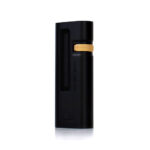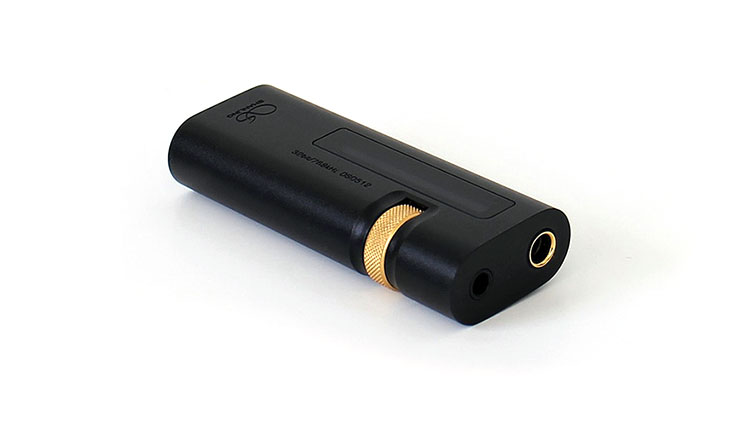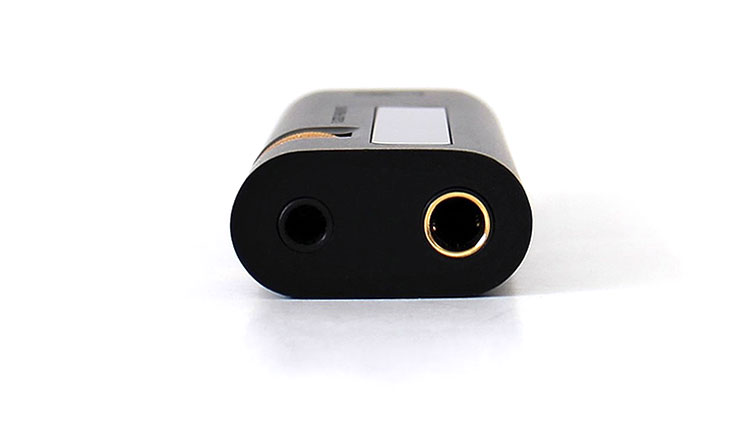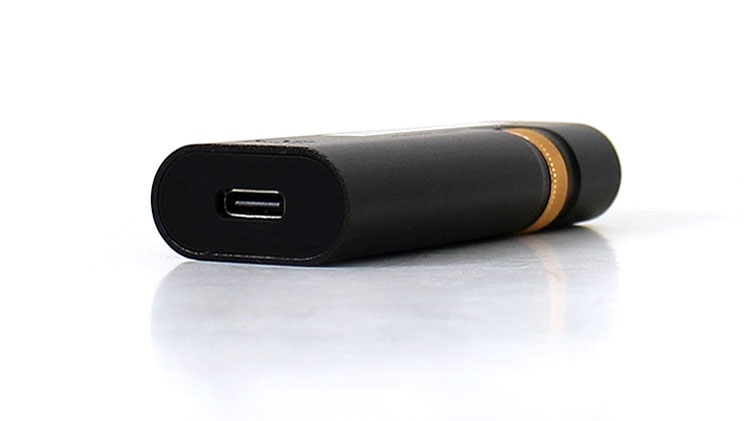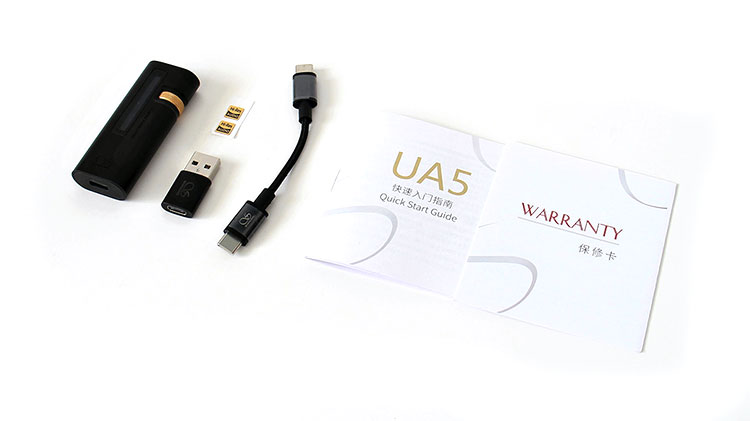Our review today covers the new Shanling UA5 which is the company’s flagship dongle-type portable DAC and headphone amplifier. It is priced at $235.
Disclaimer: This was sent to us as a sample for our honest opinion. Headfonics is an independent website with no affiliate links or services. We thank the team at Shanling for giving us this opportunity.
To read more about Shanling products we have previously featured on Headfonics click here.
Note, that this article follows our latest scoring guidelines which you can read up on here.
It seems everyone wants to make dongle DACs nowadays but to be successful manufacturers would most definitely have to do something different or cram the unit up with features, either that or make the best-sounding dongle.
If you look at most models out there you will find similar shapes and features and that’s a problem since the market is starting to get to a level of high saturation.
The common dongle DAC features are dual headphone outs with a USB input port in a similar-sized shell and if you’re lucky you might get one with onboard volume control. But to be fair to the current market there are lots of models out there today with the volume control feature.
Shanling used at least one of the above concepts when they designed their UA5 dongle DAC and for starters crammed this little guy up with lots of features. Actually, even the above-mentioned volume control was taken to another level on this particular device.
Standing at just around half an inch shorter than a BIC lighter the Shanling UA5 has more than just some gas inside the shell. This little guy has some features I haven’t seen before on the other more common type dongle DACs including the recently reviewed UA2. The question here then is the gas regular or premium high test?
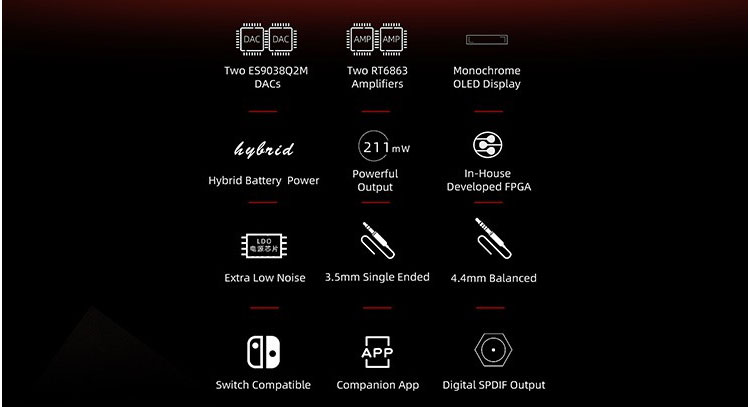
Tech Highlights
The Shanling UA5 does not use a single chip solution; in fact, the UA5 is a far step from that since it doubles up on all the internal components. Most of the circuitry design borrows tech from some of the best DAPs Shanling makes.
First off the DAC section consists of two ESS ES9038Q2M DAC chips which can run in a single chip or dual-chip mode selectively in case you want to run the UA5 on economy mode to save on gas.
This dongle will also allow you to select the DAC’s inherent 7 digital filter options. The modes you can choose from are Hybrid, Apodizing, Brick wall, In-Ear Fast or Slow, and Mini Fast or Slow.
The DAC section feeds two Ricore RT6863 amplifier chips dropped within a dedicated headphone and dual-mono amplifier circuitry design which combined with the dual DAC chips form a fully balanced circuitry which then outputs to a pair of headphone jacks, one is a single-ended 3.5mm and the other is a balanced 4.4 Pentaconn.
On the back, there’s a USB-C input connector which works best on a 3.0 port but it also has backward compatibility with 2.0 ports and it even does compatible mode or UAC1.0 which is obtainable by means of pressing the volume knob while connecting the UA5 to a device.
The circuitry design sits behind a highly precise crystal oscillator, a CT7601 USB bridge, and a custom in-house Field Programmable Gate Array or an FPGA.
Digital Formats
There’s not much to say here. The Shanling UA5 handles two digital formats, PCM and DSD and by my standards, this would be fine but those who dabble with MQA might be disappointed.
The UA5 is Android, Apple, game console, and PC compatible. You get USB connectivity out of the box but you have to outsource a Lightning cable if you plan on using Apple gear.
The dual ES9038Q2M setup does 768 kHz at 24 or 32 bit and DSD 512 as well. There is a way of running just one DAC chip internally but even with just one chip selected, the UA5 could still handle both digital formats just fine and always demonstrated a good amount of processing power with no buffering issues on that one DAC chip mode.

Amplification
According to specifications, there are more powerful dongle DACs out there but in no way is the UA5 a slouch either. It sits right at the 200mw and above class with 211mw on the balanced side at 32Ω and 137mW on the SE side. Output impedance is rated 0.8Ωand 1.6Ω on the balanced side.
DNR and SNR sit very close to each other at 122db at 32Ω and 121 at the same impedance but that’s on the balanced side. It seems to drop a few numbers on the single-ended side. They drop down to 120dB and 116dB respectively.
Frequency response is listed at 20 to 50 kHz and some might say the low-end extension is the lesser of the two extremities here but anything below 20 Hz would be considered low rumble and that just wastes power and in this case, the specification actually buffers against wasteful subsonic frequencies.

Hybrid Battery Mode
The Shanling UA5 has an internal battery that has a rated capacity of 220mAh but it does not power up the device. Instead, it runs the amplifier and DAC chips and removes most of the power drain responsibilities off the USB port which is good news for mobile users.
This brings two distinct benefits. The first is obviously the longer battery life you get if you pair it with a mobile device and the second is the sonic improvement since the battery provides cleaner power versus the raw and sometimes dirty USB power line which can introduce noise into the circuitry.
The battery charges in half an hour and can run for 6 hours if you run off the 3.5mm jack and it drops down to 3 hours off the 4.4mm Pentaconn output and it’s expected since the port supplies a higher power output level.
This hybrid battery solves the average dongle battery drain and I on average noticed a very low 3% drain on the cell phone battery while listening to approximately an hour of music time.
Design
The Shanling UA5 measures 68x27x13.5mm in size and weighs 29 grams. I have to admit, the UA5 is somewhat of a chunky device.
The body seems to be made of metal except for the USB port side end cap. I got a black one but there’s a red version which looks very hot and I sometimes wonder if I should have chosen the red version instead.
Actually, you could change the UA5 color because Shanling offers a custom leatherette case in various colors for the UA5 but it has to be purchased separately. I think there are 3 colors available.
Shanling managed to squeeze within this shell all the electronics, a battery, a 1-inch monochrome OLED display, a volume knob plus the 2 headphone output ports with a USB-C on the other end. One interesting aspect about the UA5 is that the volume control handles multiple functions and serves up a few cool functions.
I/O
I wanted to touch on a particular feature from the Shanling UA5 because I found it to be rather different but somewhat oddball at the same time and you will probably agree.
We already covered the 3.5mm and 4.4mm output jacks plus the USB-C input port. But the UA5 has a SPDIF output capability of the 3.5mm plug. You do have to separately obtain the adapter to access this feature since Shanling doesn’t throw one in the box.
Now don’t get me wrong features are good to have but for a dongle DAC to have a SPDIF out would be like a USB DAC having a SPDIF out. What would you use that for? You could daisy chain DACs with that feature but why would you want to do that? Think about it. Perhaps just to convert from USB to SPDIF?
You could use a phone on the UA5 and then the SPDIF out to a receiver or another DAC but there are other ways that are more efficient and wireless nowadays to do that. It would be best in my opinion and for that particular case to get a Bluetooth dongle and go LDAC. So in that case then I would probably look at the UP4 or the UP5 instead.
Features
For starters, the volume control on the Shanling UA5 turns on the OLED screen besides adjusting volume and a quick press gives you a quick view of your general settings. If you leave it pressed in for a couple of seconds it reveals a menu you can scroll through.
The features within this menu you could choose from are the following. There’s a balance control, SPDIF on and off, Screen off time adjustable in 5-second intervals from 5 to 60 seconds, screen brightness, and screen rotation,
Charging on and off, high and low gain settings, the DAC filter selection, power select mode between the USB power or hybrid battery power, and it finally displays the firmware version.
The basic screen does show basic information like format, volume level, and battery status but the menu behind that is where it’s all at with this dongle DAC. The volume control also does volume lock on double press and when you hold it down while you connect a device it enters a UAC 1.0 mode to assure compatibility with gaming devices.
Packaging and Accessories
The usual stuff here, a warranty card, a quick guide which I think should be more thorough since the Shanling UA5 has features which are not mentioned within that quick guide, a dual male tipped USB-C, a USB-C to male full-size USB adapter, and a couple of Hi-Res audio stickers.
I must repeat myself and feel that the literature is lacking. I had to look up all those filters one by one on the net to get a general understanding of what their effects were but it would have been so much more convenient to have them listed somewhere in the manual but in this case, you only get a quick guide.
Click on page 2 below for sound impressions, pairings, and select comparisons


